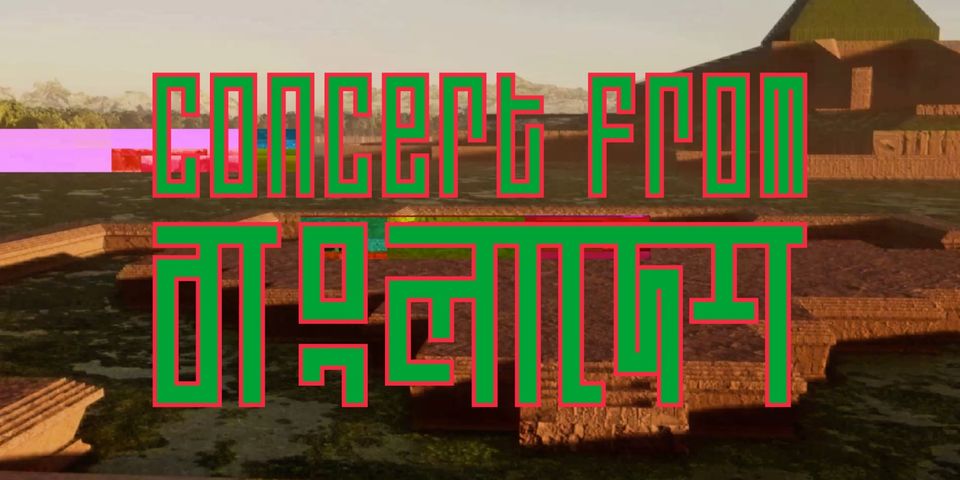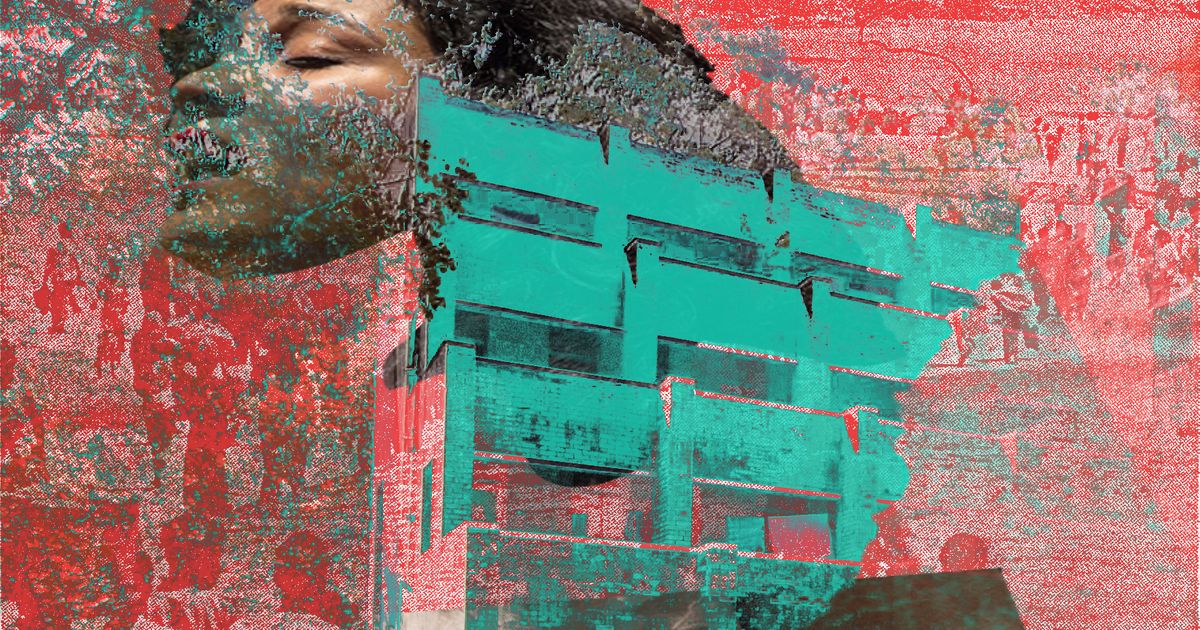On 1 August 1971, The Beatles guitarist George Harrison and the Indian sitarist Ravi Shankar took to a New York City stage to launch a humanitarian appeal for Bangladesh. The nation was then in the midst of a war against Pakistan, having declared its independence just four months prior, and was facing a refugee crisis provoked by genocide and a series of devastating natural disasters. Urgent and well-intentioned, the Concert for Bangladesh raised substantial global awareness and around $12m. But perhaps its most enduring byproduct was the image of a nation emaciated by conflict and with little chance of success.
Yet today, as Bangladesh celebrates half a century of independence, it seems anything but helpless. Situated at the apex of the world’s largest river delta, it regularly experiences severe flooding and occasional, vicious cyclones. Meanwhile politics, although comparatively stable within the South Asian region, is still marked by corruption, sectarianism and increasing crackdowns on dissidence. Despite this, since the mid-2000s the nation has been upheld as a model of development, regularly outperforming Pakistan and its other neighbours in most growth indicators. Its life expectancy of 72 years is now even higher than some parts of Mississippi, US.

In response to the 1971 concert, the British-South Asian artist Shezad Dawood in collaboration with the Bangladeshi New York-based music producer Enayet Kabir will launch Concert from Bangladesh 2021 on 1 August, a “mixed-reality” concert that merges video performances from 13 Bangladeshi and South Asian musicians in an eclectic range of styles, ranging from hip-hop to experimental electronic. Each musician will be green-screened onto a virtual reality stage, designed by Dawood, that tours notable architectural and natural sites in Bangladesh and celebrates a country that, against all odds, has become one of Asia’s most dynamic creative hubs.
Choose your words wisely
“It is important to distinguish what it means to be ‘from’ something, rather than ‘for’ it,” says Diana Campbell, the concert’s curator and artistic director of the Samdani Art Foundation (SAF), which is partially funding the project. “Effective change is rarely achieved unilaterally. It comes from collaboration,” she adds. With this simple, linguistic turn, Concert from Bangladesh attempts to reverse a problematic power dynamic inherent in its progenitor’s name: that of a former colonial power coming to the rescue.
Campbell, who is also a writer, considers these syntactic choices a great deal. She is adamant, for example, that the Dhaka Art Summit, for which she is chief curator, is not referred to as a biennial, wishing to avoid connotations of ephemerality and spectacle that surround many once-every-other-year exhibitions. But this attention to words also bears particular relevance to the concert’s historical context: “Language is the reason Bangladesh was even born,” she says, referring to the Bengali Language Movement of the 1950s, in which citizens of then-East Pakistan fought against the suppression of Bangla and other indigenous languages by West Pakistan. The movement, which enshrined Bangla in the national constitution, served as a catalyst for the rising nationalism that led to independence. To this day, Bangladesh’s languages hold a special status in its society and legislation, and the concert, which is being shown in locations around the world that hold significant Bangladeshi diaspora communities, will be made available in several of them.

Music too has a defining place in the country’s long struggle for freedom. “During the 1971 Liberation War, songs played a huge role in motivating refugees and freedom fighters,” says Ruxmini Choudhury, an assistant curator at SAF and co-organiser of the concert. She refers specifically to the Shadhin Bangla Betar Kendra (Free Bengal Radio Centre) singers, known as “voice soldiers”, who would travel across refugee camps and sing Bangladeshi songs to raise spirits. “My mother would sing these songs to me as a child. Even today, we sing them at our protests—we remember this music as a nation,” Choudhury adds.
Spanning six centuries of musical traditions, Concert from Bangladesh features among its performers the mystic Baul singer Arif Baul accompanied by instrumentalists Nazrul Islam, Saidur Rahman, and Sohel. The show will climax with the Bangladeshi hip-hop duo Tabib Mahmud and 12-year-old Gully Boy Rana, whose socially engaged lyrics broach topics around climate emergency and poverty.

For the concert’s visual elements, Dawood drew on his previous decade of research into 20th-century South Asian architecture and the non-aligned movement during the Cold War, in particular the architect Muzharul Islam who pioneered Bangladeshi Modernism.
“Islam defines what designing ‘from’ a place, rather than ‘for’ it, looks like,” Dawood says. Islam’s vision of “indigenous Modernism”, as Dawood terms it, traces a lineage back some 2,000 years to sites such as the Somapura, a Buddhist monastery built around 700 AD, that is also featured in the virtual reality stage. “Unlike Modernism in many other parts of South Asia, or the wider non-aligned world, Bangladesh’s movement was extremely homegrown, and it’s important to highlight that,” Dawood adds.
In a neat synthesis, Dawood also says that the geometric structure of Somapura, which resounds across many of the depicted architectural sites including the Louis Kahn-designed National Assembly building in Dhaka, lends itself to the lattice-like digital building blocks he used to create the virtual reality stage, allowing for the sites to dissolve and grow into one another.
Equally prominent in the VR stage are shots of Bangladesh’s rich natural landscape and fauna, such as snaking waterways and dense forests. In one section, Dawood has rendered the Sundarbans, a vast mangrove area in the country’s south, complete with fearsome, man-eating tigers stalking prey among the verdant, shallow pools.

Somewhat confusingly, Concert from Bangladesh will not be the only music event launching this weekend that addresses the 1971 concert. Taking place on the same day will be a restaging of Concert for Bangladesh 1971, organised under the aegis of India’s Council for Cultural Relations and starring the children of Harrison and Shankar: the musicians Dhani Harrison and Anoushka Shankar. The two coinciding concerts are separate entities—attempts to merge the two were dismissed early on—and in many ways they seem diametrically opposed in their organisation.
“I don’t know who Concert for Bangladesh 2021 is meant to be for exactly,” Campbell says. “Why it is being held in India? Do these musicians know what India is currently doing to Muslims? It seems strange to host a concert like this when Dhaka has such a robust cultural scene of its own.”
“’Do they know it’s Christmas?’ Ethiopia is a Christian-majority country, I’m pretty sure they know it’s Christmas” Diana Campbell, curator
Concert for Bangladesh 1971 was arguably the model for subsequent benefit concerts such as Live Aid in 1985, which in turn played a pivotal role in shaping the global charity industry. But increasingly, this model is being rethought. “When you just have a starving child as the poster for your initiative, it flattens so many other things and reduces a people’s agency. ‘Do they know it’s Christmas?’ Ethiopia is a Christian-majority country, I’m pretty sure they know it’s Christmas,” Campbell says.
Indeed, much has changed in the past 50 years, not only for Bangladesh, but also around attitudes towards aid and globalism. Where previously atomised organisations would rely on lateral flows of funds and information, contemporary problem solving relies increasingly on interdependent thinking. This, above all, necessitates a challenge to the white saviour myth. And nowhere is this rebuttal more urgent than in efforts to confront the climate crisis, an issue that is unlikely to be solved without centring voices from the Global South that are typically at greater risk.
Not that those in richer countries remain untouched. After flash floods devastated Western Europe and killed hundreds earlier this month, it seems increasingly vital to study how flood-prone nations such as Bangladesh have negotiated high waters for centuries. Citing the Bangladeshi artist Shawon Akand, Campbell says that the reason Bangladesh was never successfully colonised is because the British were unable to navigate such a perilous terrain. “People here live an amphibious life. They name their children after floods. It’s a different way of thinking about nature. But that is exactly what we need if we hope to tackle the emergency at hand.”
• Concert From Bangladesh will go live to audiences via Pioneer Works’ online platform on 1 August 2021, accompanied by live events at Yorkshire Sculpture Park (Wakefield) as part of Yorkshire Sculpture International and Pioneer Works (New York City). Additional events will take place with Chisenhale Gallery (London), at Leeds City Varieties Music Hall (Leeds) and Srihatta Samdani Art Centre and Sculpture Park (Sylhet). All funds will go towards efforts to tackle climate change in Bangladesh, as well as the human rights charity Friendship. To register for the online event on 1 August, please click here. Follow #ConcertFromBangladesh on social media for updates.
• Concert From Bangladesh is a project by UBIK Productions and Samdani Art Foundation in collaboration with Shezad Dawood and in partnership with Pioneer Works, Yorkshire Sculpture International, Chisenhale Gallery and Friendship. It is supported by the British Council Digital Collaboration Fund.
Source link : https://www.theartnewspaper.com/feature/concert-from-bangladesh-virtual-reality












